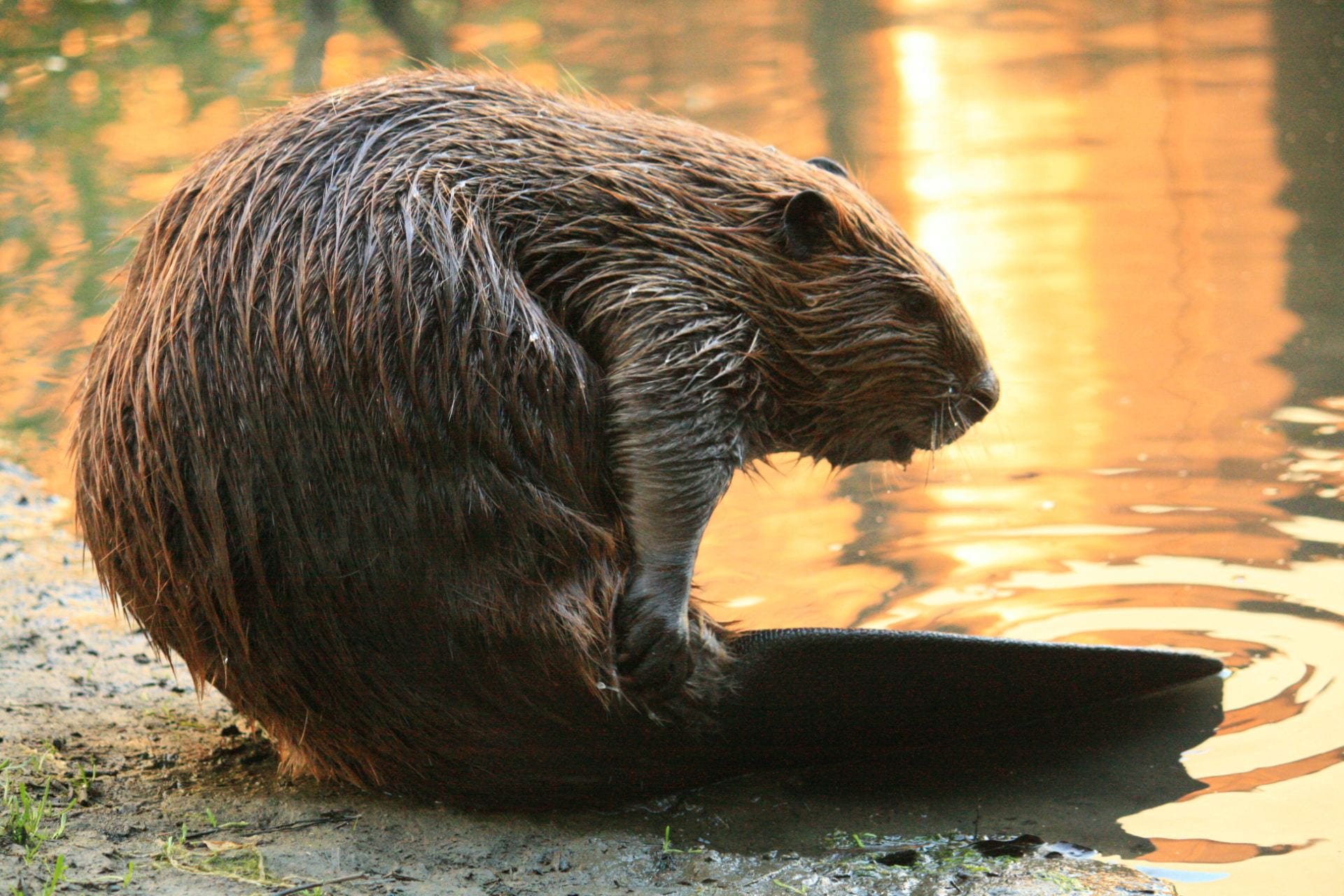Suborder: Castorimorpha (beavers, gophers, kangaroo rats, pocket mice, and relatives):
Family Castoridae (beavers):
- Genus: Castor
- North American beaver – C. canadensis

By Photo by Cheryl Reynolds, Courtesy of Worth a Dam [CC BY-SA 3.0 (https://creativecommons.org/licenses/by-sa/3.0)], via Wikimedia Commons
Family Geomyidae (pocket gophers):
- Genus: Geomys
- Plains pocket gopher – G. bursarius
Pocket gophers and pocket mice actually have “pockets”, or fur lined storage pouches at the very least. These handy dandy castorimorph clutches are present on the outside of these animal’s cheeks, and Kangaroo rats (not found in Missouri) have them as well (nps.gov). Pocket gophers are specially adapted for subterranean life and they use their poickets for transporting food underground (Reid 236). Pocket gophers make their burrows in places with deep, sandy, crumbly soil ideal for tunneling, and their distribution often mimics the coverage of such soils (animaldiversity.org). Their short, velvet-like fur allows them to move in either direction while in their tunnels, and their lips can close behind their large incisors allowing them to chew through anything in their way without getting a mouthful of dirt (Reid 236).
As could be expected of a tunnel dwelling creature, roots and tubers are staples of the pocket gopher’s diet, with above ground plants making occasional appearances. These creatures will also feed on ornamental garden plants, and that in conjunction with the tunnels and dirt mounds they leave in lawns and cropland makes them a bit of a nuisance for farmers and homewoners (nwf.org). Only one gopher should be found per burrow, as they are solitary animals and the extent of the tunneling systems rarely overlap (Reid 236). If two unacquainted gophers happen upon one another, they are prone to fight (animaldiversity.org).
Family Heteromyidae (kangaroo rats, pocket mice, and relatives):
- Genus: Perognathus
- Plains pocket mouse – P. flavescens
Pocket mice are “unimposing with small, round ears, large eyes, and long tails” with “soft, smooth fur” (nps.gov). Pocket mice are solitary and nocturnal, living alone in their underground burrows. They usually live in sandy dunes or washes in “grasslands and sagebrush; also edges of agricultural areas and open stands of conifers” (Reid 254).
Seeds are a major staple of their diet, and some pocket mice can even get enough water from the seeds they eat to go weeks without drinking anything. Pictured above is a white haired subspecies of the plains pocket mouse, Pergnathus flavescens Apachii. The apache pocket mouse lives in white sand dunes, and its white camouflage makes it much easier to hide from predators (nps.gov).
Citations:
“Apache Pocket Mouse.” National Pakrks Service, U.S. Department of the Interior,
www.nps.gov/whsa/learn/nature/apache-pocket-mouse.htm.
“Beaver.” Smithsonian’s National Zoo, 23 Nov. 2018, nationalzoo.si.edu/animals/beaver.
“Pocket Gophers.” The National WIldlife Federation, www.nwf.org/Educational-Resources/Wildlife-
Guide/Mammals/Pocket-Gophers.
“Rodents: Rodentia.” A Field Guide to Mammals of North America, by Fiona A. Reid, 4th ed., Houghton Mifflin
Company, 2006, pp. 177–340.
Teeter, Kate. “Geomys Bursarius (Plains Pocket Gopher).” ADW: Rhinoceros: CLASSIFICATION,
animaldiversity.org/accounts/Geomys_bursarius/
The Tactical Tail
Another important item in the beaver’s toolbox is their tail. What is arguably their defining characteristic, the beaver’s tail is vertically flattened, paddle-shaped, and scaly (Reid 179). It is used as a “rudder in swimming, as a balance prop while working on land and to signal danger when slapped on the water” (nationalzoo.si.edu). The tail is even used as a fat store, helping beavers get through harsh winter times (nationalzoo.si.edu). Such versatility has proven advantagous for the beaver.
Moles?
Pocket gohpers live a life not dissimilar to that of moles, however the two are very easy to tell apart. Moles have tiny teeth and even tinier unapparent eyes, whereas pocket gopher’s teeth and eyes are larger and much more readily apparent (nwf.org).

